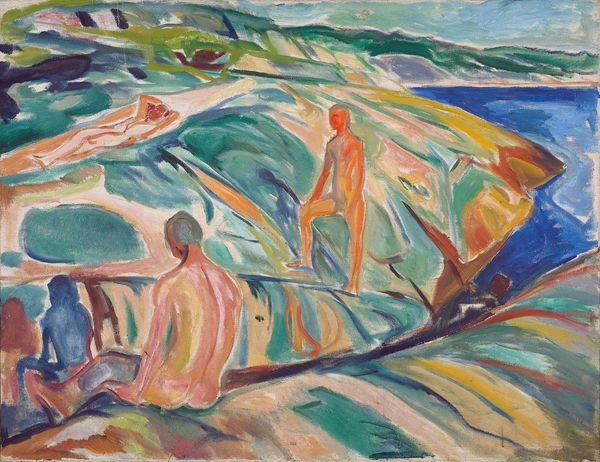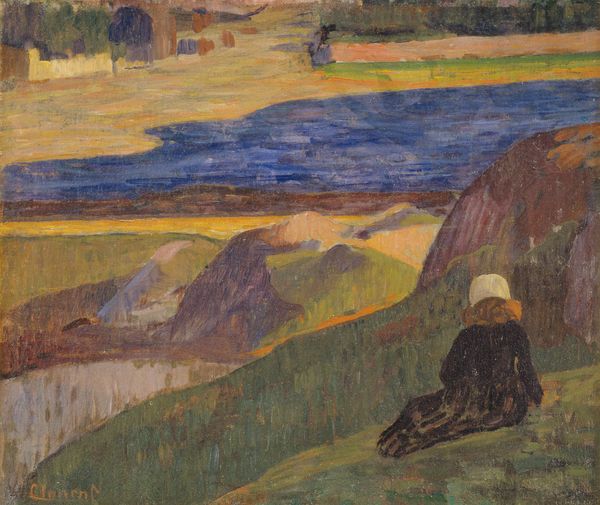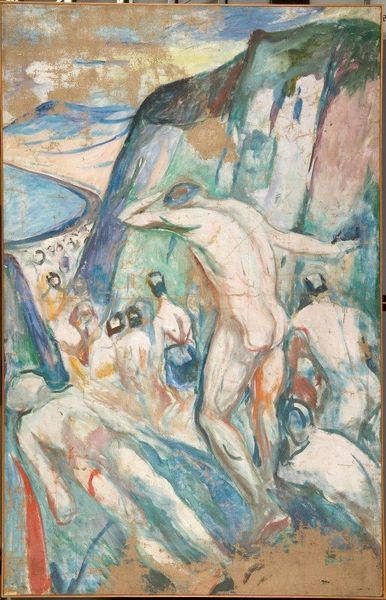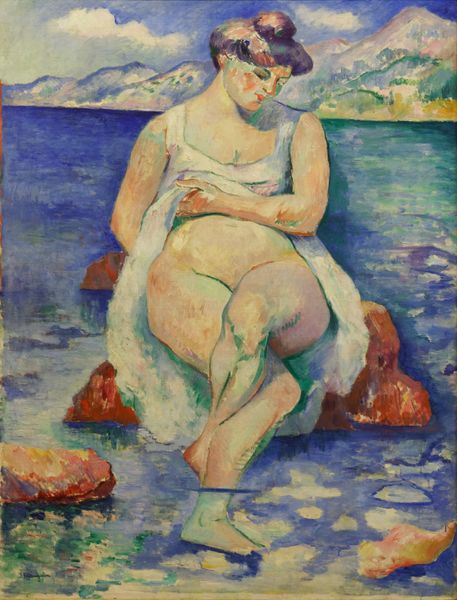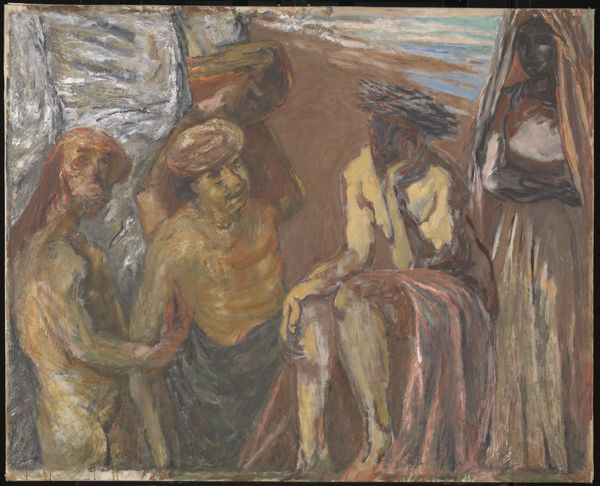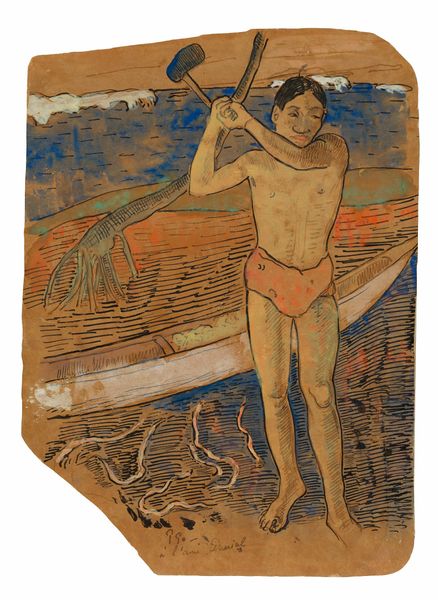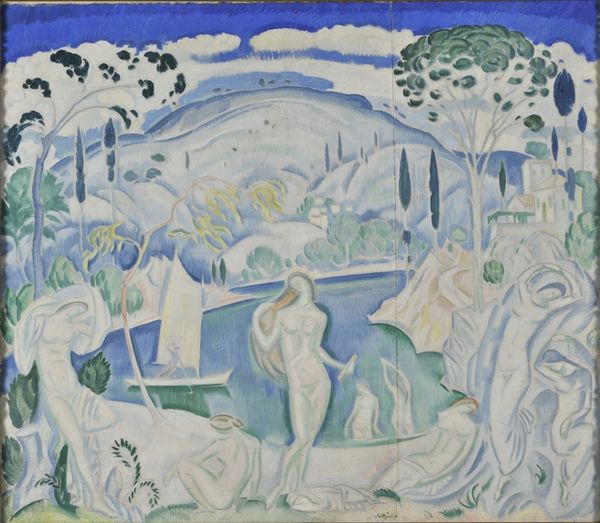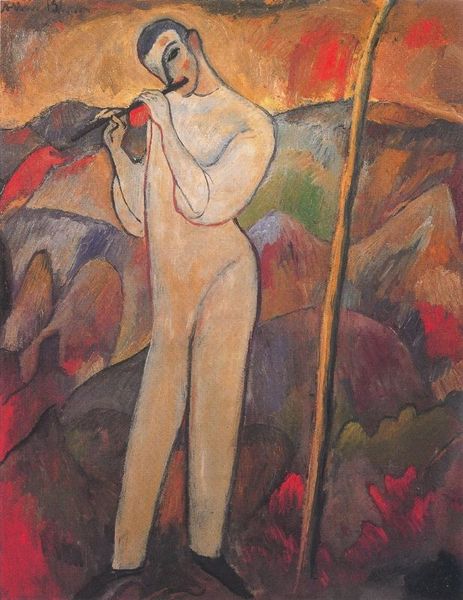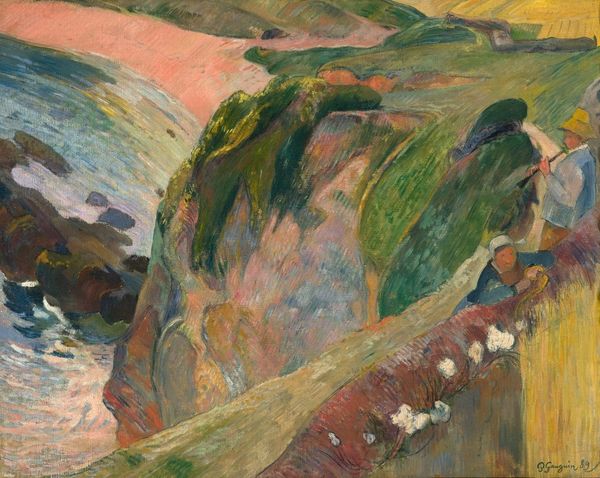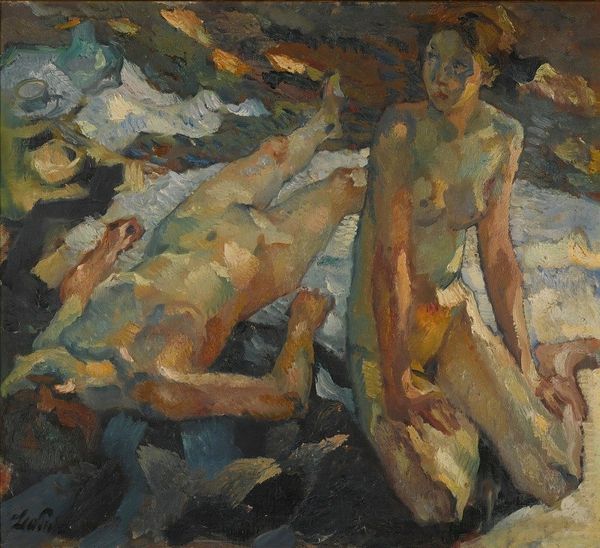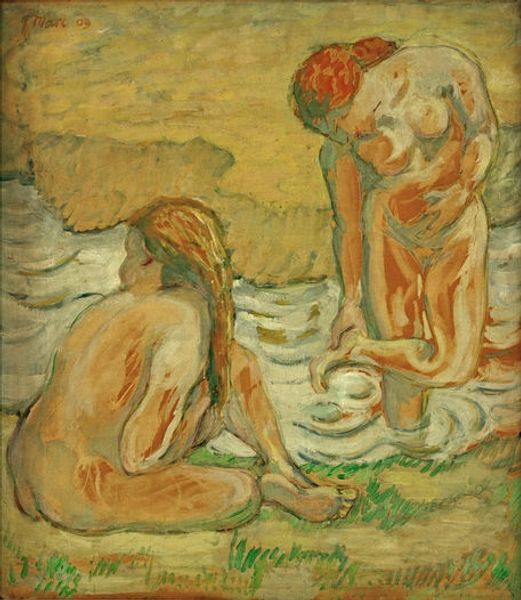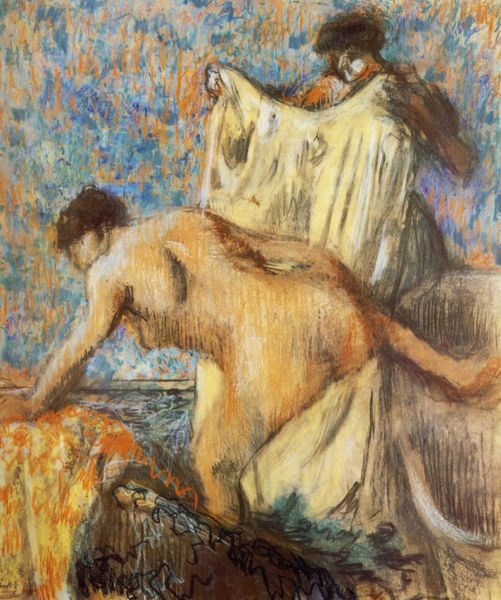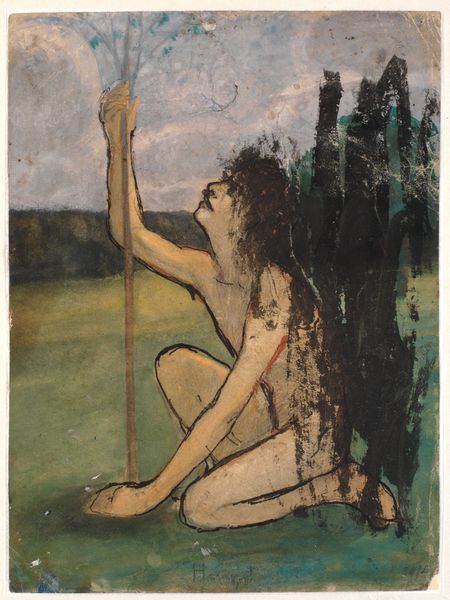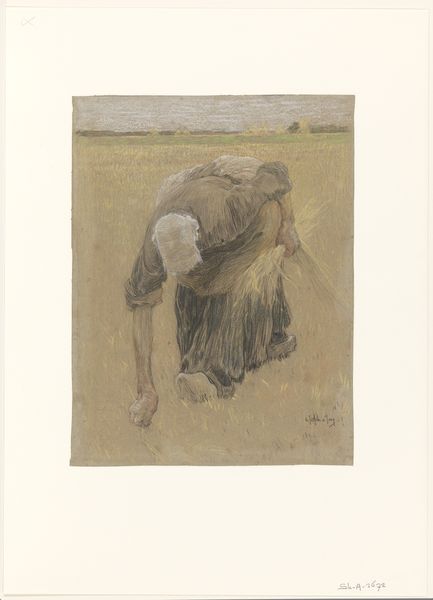
The Dream of the Shepherd (Der Traum des Hirten) 1896
0:00
0:00
Dimensions: 98 1/2 × 51 3/8 in. (250.2 × 130.5 cm)
Copyright: Public Domain
Editor: This is Ferdinand Hodler's "The Dream of the Shepherd," painted in 1896. It's oil on canvas, and depicts a shepherd in a rocky landscape, seemingly lost in thought or despair, while above him, a group of dancing figures appears. It definitely gives me a feeling of isolation. How do you interpret this work? Curator: Immediately, my eyes are drawn to the artist's choices of material and technique, specifically the seemingly rough handling of oil paint and visible strokes that make up both the natural landscape and ethereal figures. Think of the social context; Hodler, a Swiss artist, was working in a period grappling with rapid industrialization and shifts in traditional labor. What sort of labor do you think this painting refers to? Editor: Well, the shepherd, obviously! Shepherding is quite traditional and connected to the land. It contrasts sharply with the increasing industrial labor of the time. Curator: Precisely. Now, consider how Hodler uses paint not to obscure labor, but to highlight the *making* of the image itself. This wasn't about depicting some historical scene, right? Rather, the artwork embodies the artist’s *own* labor, mirroring and perhaps commenting on the shepherd’s connection to his craft. Editor: That makes sense! It's like the visible brushstrokes are a kind of "labor trace" of Hodler's process. I was so focused on the imagery. I hadn't considered the process of actually creating it! Curator: Exactly. Even the scale of the work, meant to be displayed, speaks to the commercial aspect and public consumption of art, adding another layer to the discussion of labor and value. How might thinking of artistic "labor" impact the viewer's reception? Editor: It challenges this romantic idea that art is born from genius, or purely out of pleasure! I learned how labor, consumption and materiality were all part of the artistic production and that adds another dimension for interpretation! Curator: Right, and by examining Hodler's methods and motivations we see that the materiality provides valuable insights for appreciation!
Comments
No comments
Be the first to comment and join the conversation on the ultimate creative platform.
